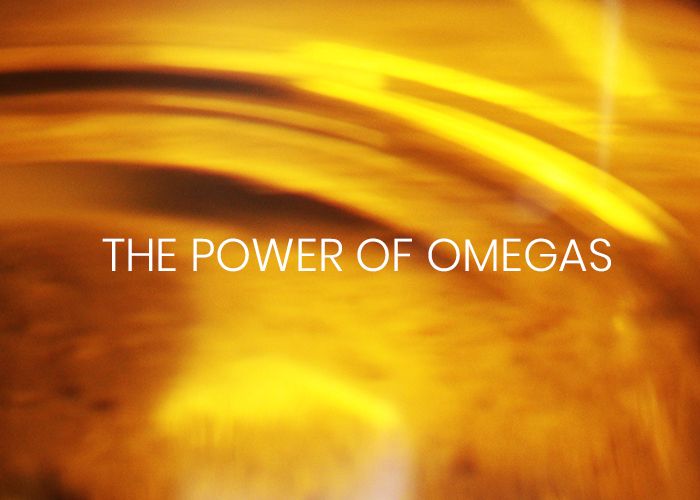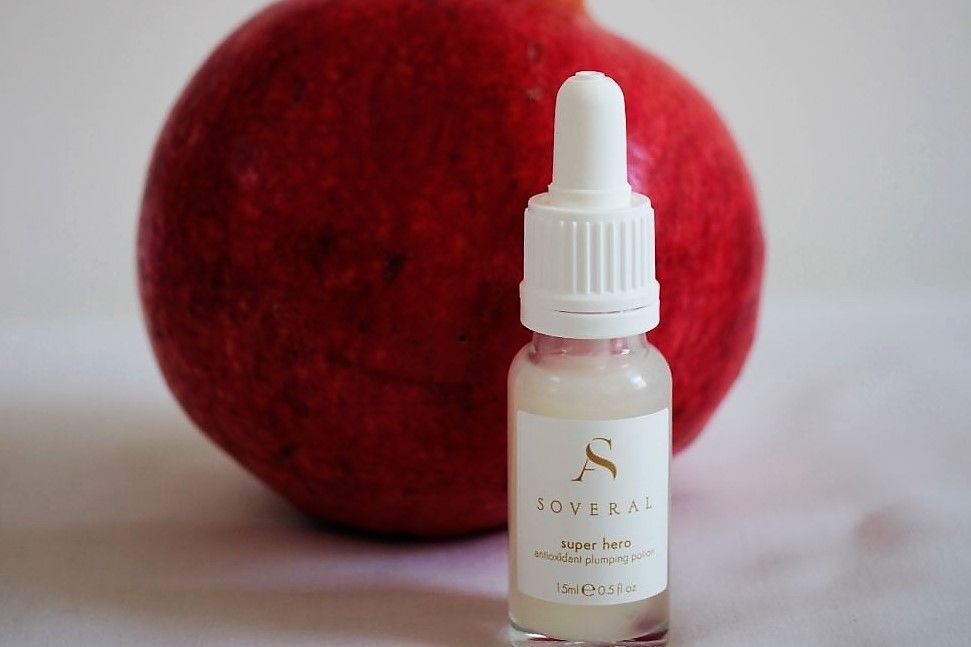Welcome to the world of Omegas
Posted on

We cover this briefly in our March Soveral Monthly (scroll down to sign up) but here we delve into Alexandra’s knowledge of all things omega…
Omega in Greek refers to end or tail. In oil chemistry it refers the end of the molecular structure of an oil. The number is determined by counting how far along in this structure there is a double bond. For example, in omega-3 the double bond is repeated after three carbons in the chain. It is this that gives each oil its unique profile.
THE HIGH OMEGAS
The higher the number, such as Omega-9, the heavier the oil is as it has longer carbon chains. These fatty acids are excellent lubricants to help the skin stay pliable and are part of the skin’s barrier. The skin naturally makes lots of these high omegas as they make up roughly 30% of the skin’s fatty acids.
Over-production of Omega 9 gives way to oily skin and sometimes acne breakouts. When the skin is lacking the lower Omegas, which it cannot produce (it gets it from diet) it compensates by overproducing Omega-9, often resulting in blocked pores. Therefore, using oils with Omega 6 and 3 is a way to help the skin to find balance.
Under-production of Omega 9 gives way to dry skin that is often flaky. This happens with ageing and becomes more pronounced with the menopause. This together with the decline in collagen is a great contributor to accelerated ageing. In this case, using oils rich in Omega 9 is of great benefit for the skin.
THE LOW OMEGAS
The lower the number, such as Omega 6 and 3 the lighter and more easily absorbed the oil is. This is great because the skin cannot readily make these omegas, we are dependent on getting them from our diet, or topically, and our skin needs them for its healthy functions. When massaged on the skin, these small omegas, especially Omega 3 can penetrate deep into the skin, offering it its regulatory and anti-inflammatory properties.
It sounds wonderful… but there’s a hitch. These short chain fatty acids can easily oxidise, and once they do, it means rancid oil, which feeds the bad bacteria – not a good thing for acne prone skin or skin that becomes easily inflamed, such as eczema or psoriasis. To avoid this from happening, we run a natural and organic antioxidant from rosemary through our oils to preserve their wonderful properties.
HOW I FORMULATE WITH OMEGAS
Each product is perfectly balanced, offering the skin a readily bioavailable source of fatty acids to deeply nourish it as well as offering it protection by helping it reinforce its natural barrier. Sunflower seed oil is the base of many of my formulations, but this is not just any sunflower oil, it is an organic oil that is very high in omega 6 in linoleic acid, which often the skin is deprived of.
TOP TIP
Find out which oils your skin likes and you will know which omegas your skin needs.
Avocado – High in omega 9
Apricot Kernel – Blend of Omega 9 and 6
Sunflower – High in Omega 6 and 3
Each are available as organic base oils for you to blend at home – shop our vegetable oils
Omegas in our products:
For high omegas: Angel Balm.
For feeding the skin a balanced Omega ratio: Midnight and Forever Young oils.
For the low omegas: Spotless Gel, Bespoke Oils.
Don’t miss out on the next insights in the Soveral Monthly – sign up to the mailing list and get inspired.

